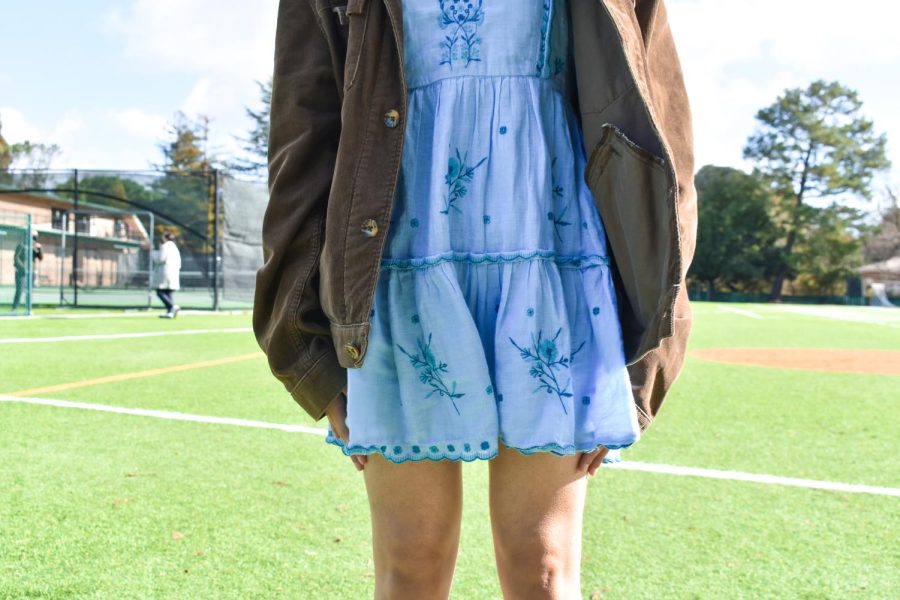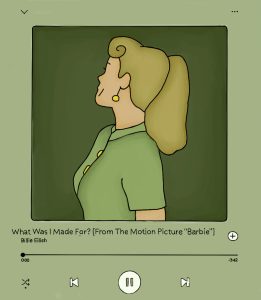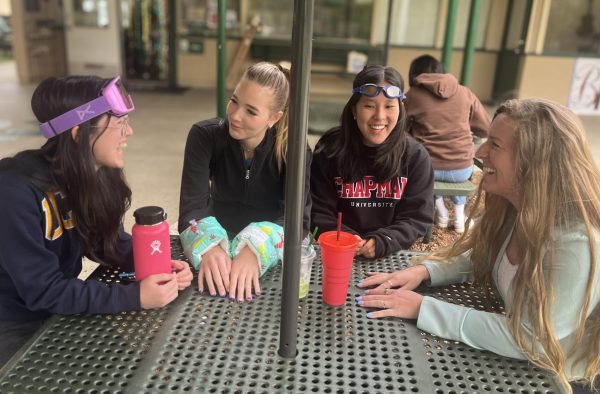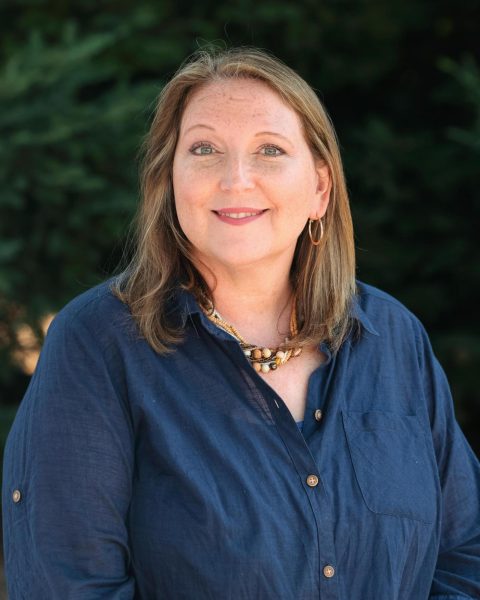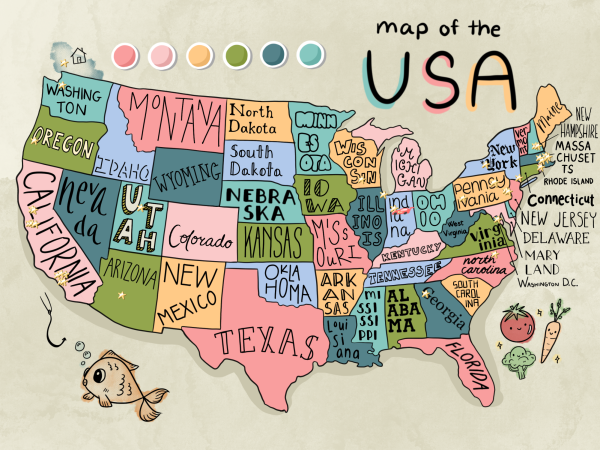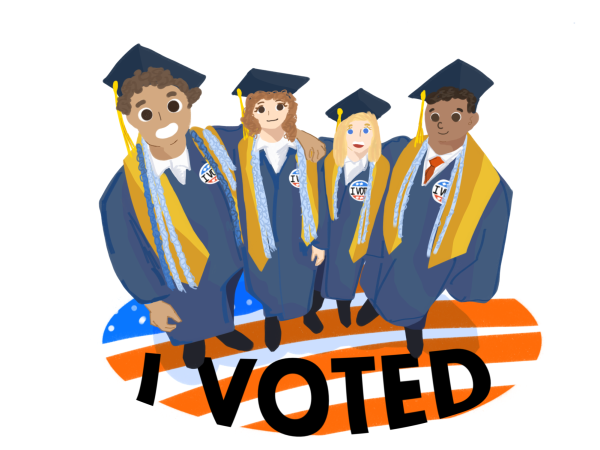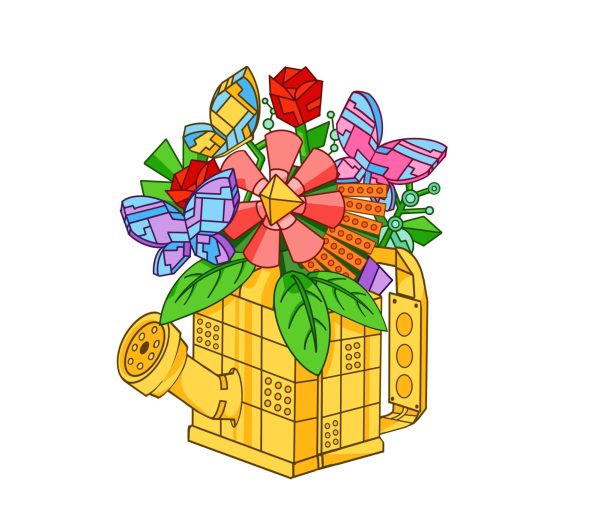The Injustice of the Pinewood Dress Code
May 15, 2021
Senior Micaela Rodriguez Steube still remembers the first time she was told her outfit violated the dress code. She was in middle school and was wearing a pair of shorts that she specifically made sure went past her arms. Despite that, a faculty member still pulled her out of class in the middle of writing her answer on the board. She was “dress coded,” a term that refers to getting in trouble for violating Pinewood’s rules for dress at school. When she went back into the classroom, everyone knew. She felt embarrassed, angry, and ashamed.
Rodriguez Steube’s experience with the dress code resonates with many of Pinewood’s student body, who have complained about its effects on students’ education, creativity, mental health, and sexuality. Rules like, “skirts and shorts must be even with or longer than the student’s longest finger when the arms hang naturally at the sides,” “shirt, top, or dress must have two-inch shoulders or be covered by a sweater, jacket, or another shirt—no tank-tops,” “hair must be a natural color; an extreme hairstyle worn for the purpose of drawing attention is not allowed,” are problematic for many students.
“I hate it,” senior Sam King said. “ I understand why private schools such as Pinewood have a dress code, but I certainly do not agree with it.”
Curriculum Director Laurie Eickmeier, the previous overseer of the dress code, said that some version of a dress code has been around at Pinewood for a very long time, even before the high school was created. Over the years, it has been edited and updated several times, with the latest time being the summer of 2019.
Principal Gabriel Lemmon acknowledged that the administration should have focused more on how the dress code impacts students.
“I had not, in my first three years, paid attention to the dress code the way it probably should’ve been,” Lemmon said. “I’ve just been in the community and learning how to be the principal here, and I’ve wanted the dress code issue to just go away and guess what, it didn’t.”
King, Rodriguez Steube, and Haley Hemm, vice principal and current overseer of the dress code, are in the process of creating the Student Success Team to revise and update the justice system at Pinewood. Although it might take some time to get there, one of the SST’s eventual goals is to renovate the dress code as well as the consequences for breaking the dress code.
“The roots and the foundation of the Student Success Team and how I’m envisioning and how [Sam and Micaela] are envisioning it’s going to happen is going to leave capacity for students to speak truth to power,” Hemm said.
King, Rodriguez Steube and the other students who have been pushing for change say that the dress code is disruptive to students’ education among its other effects.
“You can never take a student out of their learning and tell them that their clothes are distracting… if you’re going to take a girl out of class to tell her her shorts are too short, that can wait for break,” Rodriguez Steube said. “You should not have your learning interrupted to have a beauty standard imposed on you.”
Students also think that the consequences for breaking the dress code are too harsh and unnecessary. The rules are as follows: a warning and an appropriate piece of Pinewood clothing to wear for the day for the first offense, a detention and an appropriate piece of Pinewood clothing to wear for the day for the second offense, and a detention and appropriate pieces of Pinewood clothing to wear for the next four days for the third offense.
When King was “dress coded,” the part she was angriest about was the email she was sent that stated she had to wear a piece of Pinewood clothing to “promote school spirit” as part of her punishment.
“School spirit? No, to me that is shaming. It is wearing a red scarlet letter A in public,” King said. “Everyone knows what wearing a piece of Pinewood clothing means… it is truly embarrassing, and it does not promote school spirit whatsoever.”
In addition to complaints about taking away student individuality, some say that the dress code unfairly targets girls.
“[The dress code] definitely affects the women more. If you look at the rules, many of them don’t apply to men,” Junior High Teacher Jennifer Bates said. “ I think that it is unfortunate that it does seem to be harder on the women.”
Hemm agrees that all dress codes unfortunately have a clear bias.
“Universally, we can acknowledge that dress codes usually unfairly affect women. No matter where you go, no matter what it is, professionally or students, dress codes affect women more than they affect men,” Hemm said.
Senior Drew Ness added that getting dress coded sometimes felt like getting shamed for having the natural body of a woman.
“It really should be obvious how impactful that is to someone: that their body is one that won’t be taken seriously, isn’t professional and is the problem when it comes to sexual comments,” Ness said.
Rodriguez Steube said that teaching girls to hide their body in their early teenage years is extremely harmful to their mental health and self-confidence.
“It conditions you to look at yourself in the way that someone who is sexualizing you would,” Rodriguez Steube said. “It forces you to think showing your body is bad, which means your body is bad and that is the root of a lot of self esteem issues.”
King also feels judged and uncomfortable walking through the halls, like hawks are looking for imperfections to point out to everyone.
Critics of the dress code point out that the dress code seems to not only target girls, but also a certain body type. For example, of two girls wearing the exact same shirt from the exact same brand, usually the curvier girl is the one most likely to be dress coded.
“Some people are so much more likely to get dress-coded… if [Pinewood] is going to have a dress code, they should make sure it’s enforced fairly towards everybody,” freshman Callie Pruitt said.
Some male students at Pinewood feel like the dress code may be a jab to them as well. Freshman Jakob Kleiman believes that Pinewood should be proud that their male students are respectful enough that their female counterparts feel comfortable to wear whatever they want.
“Personally I can’t comment on how women feel, but if they actually are comfortable around their male counterparts to wear [tank tops and shorts] then I think Pinewood should be proud,” Kleiman said. “Being well taught and respectful should be the minimum, but I still think the right to be proud is deserved.”
Kleiman also added that if a female classmate was wearing shorts that weren’t to her fingertips or a tank top, it would in no way distract him from his learning.
In addition to targeting females, some students also feel that the dress code stifles student individuality and creativity. Ness said that it feels as though Pinewood wants everyone to dress a certain polished way, which boxes in the students. Rodriguez Stuebe added that despite Pinewood being a more professional environment, it is still a high school with students that might want to alter their appearance.
“You’re going to have students who want to color their hair and want to get a nose piercing, and that’s okay because that represents the community,” Rodriguez Steube said. “We don’t want to just scrape off the creativity that we can express through our appearances.”
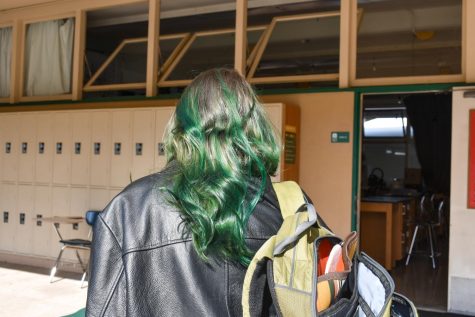
Freshman Makena Matula, who sports crimson hair and considers their style influenced by grunge and 90s fashion, believes that the dress code does hinder the ability for students to express themselves through clothing.
“I think someone’s personal style is an extension of their personality… it’s kind of like them expressing what they feel on the inside on the outside,” Matula said. “For me, I’m more comfortable wearing things that I like and I feel comfortable in, so seeing that certain articles of clothing aren’t allowed can damage that.”
Hemm stressed that just changing a few words in the dress code won’t make a huge difference until the culture changes.
“I think culture influences policy and policy influences culture and so changing the dress code doesn’t automatically change culture,” said Hemm. “You can start with policy, but then there also has to be a total cultural shift about how to perceive each others’ bodies. And that’s a much longer process than just changing the words in the dress code.”
Lemmon added that it is necessary to create a good process that involves student voices in order for change to happen. He believes right now the process doesn’t have a good balance between student contributions and school standards. Students and faculty interviewed said they thought that creating a committee that involves student voices to discuss and possibly modify the dress code would be a good start.
Hemm said that one of her goals is to have a system that takes the consideration of student voices on important topics. Bates thinks similarly.
“I think there should be a student committee to review and give recommendations about what they would like to see and make some sort of compromise between what we have now and what the students would like to see,” Bates said.
Lemmon said that he is excited to get more student voices involved.
“I look forward to the process and I look forward to the student contributions,” Lemmon said. “The whole point of a school is to grow… we have to be always learning and growing and reflecting and offering more and more opportunities to hear voices.”
King and Rodriguez Steube said that changing the dress code would be Pinewood’s first step in becoming more open and inclusive.
“I can wear a clown suit to school and not get dress-coded, but if I wear a tank top, I will. It’s not about distraction, it’s about sexuality,” Rodriguez Steube said. “And that’s something that’s a bigger issue than Pinewood, it’s a bigger issue than this area, it’s been an issue for a long long time. And making changes to the dress code is our little step towards desexualizing women and women’s bodies.”

